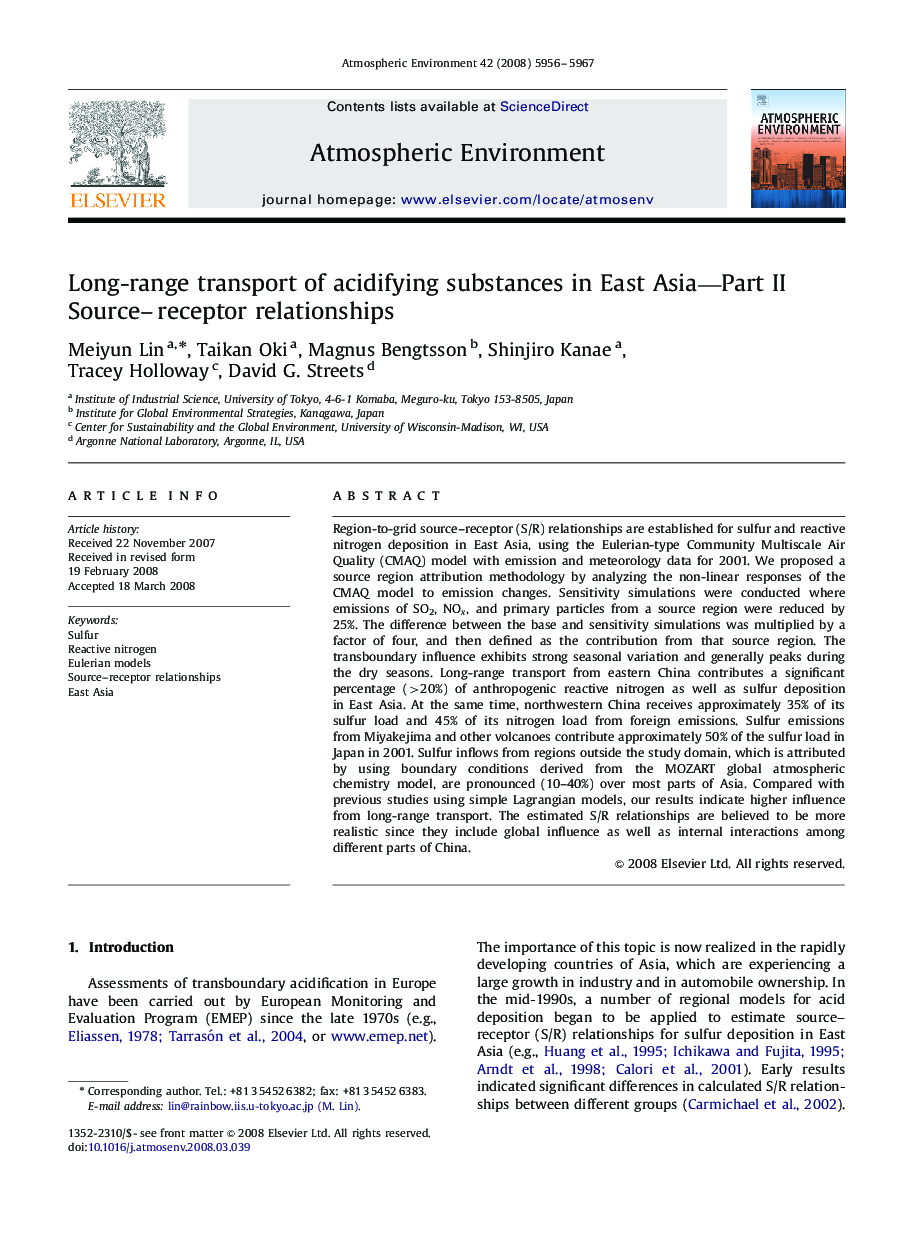| Article ID | Journal | Published Year | Pages | File Type |
|---|---|---|---|---|
| 4442757 | Atmospheric Environment | 2008 | 12 Pages |
Region-to-grid source–receptor (S/R) relationships are established for sulfur and reactive nitrogen deposition in East Asia, using the Eulerian-type Community Multiscale Air Quality (CMAQ) model with emission and meteorology data for 2001. We proposed a source region attribution methodology by analyzing the non-linear responses of the CMAQ model to emission changes. Sensitivity simulations were conducted where emissions of SO2, NOxNOx, and primary particles from a source region were reduced by 25%. The difference between the base and sensitivity simulations was multiplied by a factor of four, and then defined as the contribution from that source region. The transboundary influence exhibits strong seasonal variation and generally peaks during the dry seasons. Long-range transport from eastern China contributes a significant percentage (>20%>20%) of anthropogenic reactive nitrogen as well as sulfur deposition in East Asia. At the same time, northwestern China receives approximately 35% of its sulfur load and 45% of its nitrogen load from foreign emissions. Sulfur emissions from Miyakejima and other volcanoes contribute approximately 50% of the sulfur load in Japan in 2001. Sulfur inflows from regions outside the study domain, which is attributed by using boundary conditions derived from the MOZART global atmospheric chemistry model, are pronounced (10–40%) over most parts of Asia. Compared with previous studies using simple Lagrangian models, our results indicate higher influence from long-range transport. The estimated S/R relationships are believed to be more realistic since they include global influence as well as internal interactions among different parts of China.
